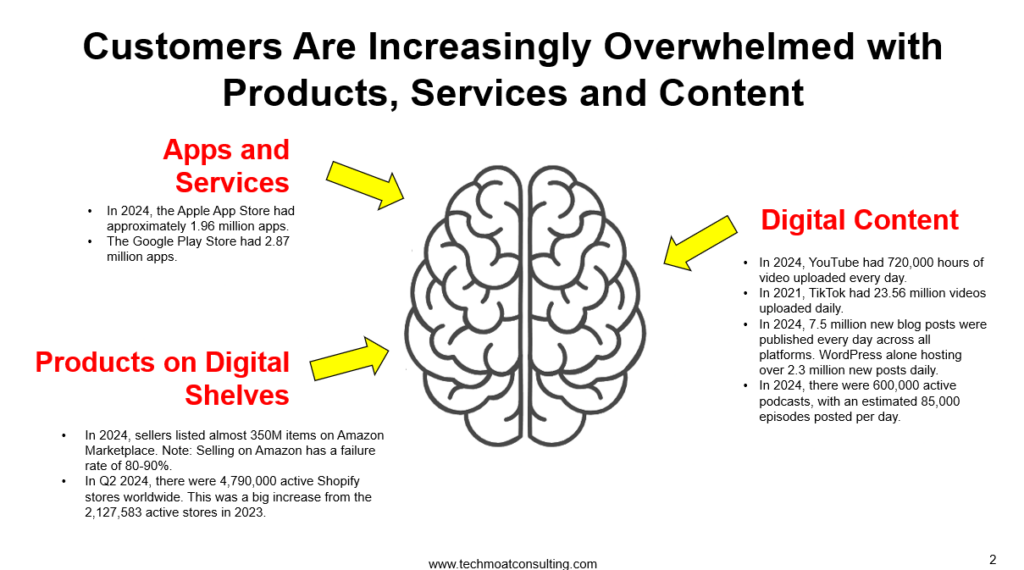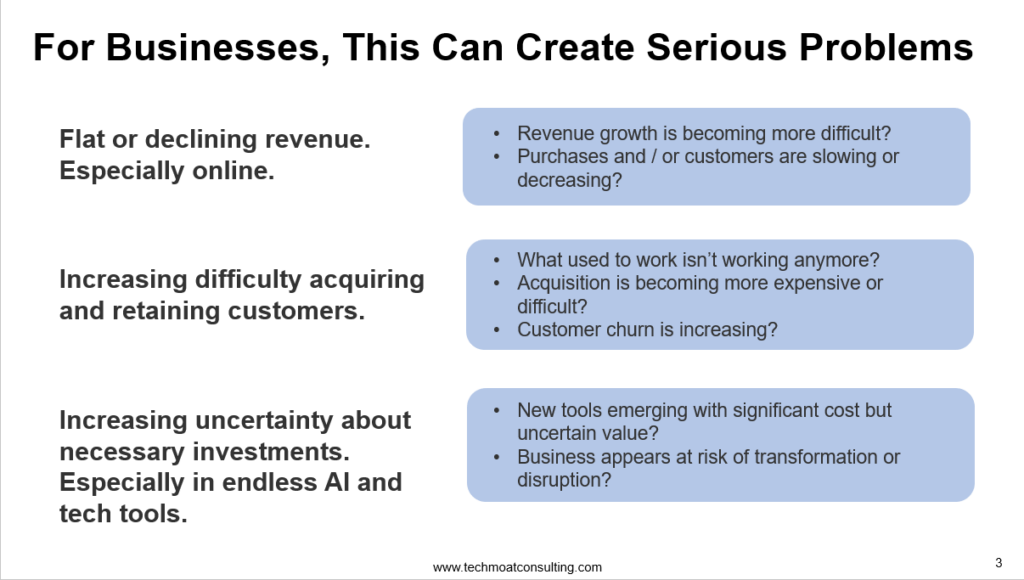We are entering the hyper-competitive digital age.

And this creates all sorts of problems for businesses.

Businesses are increasingly turning to personalization as a strategy to enhance customer value and gain a competitive edge.
That’s good. But standard personalization is not enough.
Personalization is definitely part of this playbook. Moving beyond the “one-size-fits-all” and tailoring experiences definitely a powerful level to increase your value to customers.
To win, you need to aggressively and systematically build customer value across multiple levels, which I call the Extreme Personalization Playbook (PrISM). This is summarized here.

This article details three common misconceptions about extreme personalization and how to avoid them.
Misconception 1: Personalization is a One-Time Project, not a Continuous Process
One of the most common errors businesses make is treating personalization as a one-time project with a defined beginning and end. Many think that once they have implemented a basic personalization system, the job is done.
This is a fundamental misunderstanding.
The reality is that personalization is an ongoing process, a marathon without a finish line. It looks like this.

It means continually launching new use cases. And it means continually building an organizational and operational model that can add value to customers. That means a system that can:
- Gather Data: Continuously collecting data about customer preferences, behaviors, and interactions across all touchpoints. This includes data from browsing history, purchase history, demographics, and more.
- Experimentation: Implementing personalized features, content, or offers and testing their effectiveness.
- Learning and Adapting: This is about analyzing data and insights, making necessary adjustments based on the results. This might involve tweaking the personalization algorithms, modifying content, or changing promotions. Adopting new GenAI tools and intelligence capabilities is key.
Without this approach, businesses risk falling behind their competitors who are constantly seeking ways to improve customer experience. With this approach, you can look like this.
This is what winning looks like.

Misconception 2: Personalization Means Treating Every Customer as a “Market of One”
Another common misconception is that personalization means treating every customer as a unique “market of one” with a fully individualized experience. While this concept is good in theory, it’s usually impractical in practice. And it can even be detrimental (it requires tons of data, which customers can resent).
While hyper-personalization to the individual is a goal, most businesses can’t personalize to the individual customer like Amazon, YouTube or Netflix. Trying to personalize to the individual customer requires a fully digital business model on the demand side, with no human in the loop.
Most businesses should instead aim to customize their products, services, and experiences for smaller groups, such as specific demographics, geographies, behaviors, or customer types.
The first step in this process is usually doing a customer segmentation and mapping out the customer journey into stages.
Against this map, you can focus on the best use cases for personalization, such as promotions and deals for more loyal customers. This is where the return on investment (ROI) is often the highest.
It is important to note that true “market of one” personalization may be increasingly possible with the rise of generative AI and smart manufacturing. However, most businesses can and should focus on creating customized experiences at the smaller group level, where it is more manageable and still offers value to customers. It’s about finding the right balance of customer segmentation, which requires data insights and continuous experimentation.
Misconception 3: Personalization is Only About the Product. Or Marketing.
Many businesses limit their view of personalization to just the product or service they offer. We should just customize some product features, options, or appearance.
And others view this as a type of marketing. Like start tailoring our promotions and advertisements.
But you’ve got to go way beyond that now. Those are just table stakes.
The Extreme Personalization Playbook (PrISM) framework includes personalization of products and services, interactions, new services and building a moat. It needs to encompass the entire customer journey, including:
Interactions
Building a “repeat and retain machine” involves creating engaging experiences that encourage interactions, repeat purchases and customer retention. This can be done by tapping into areas with deep emotional or psychological impact, such as fandom, collectibles, or shared identity. It also includes providing thrilling products or “wow” experiences. You can do lots of small initiatives designed to surprise and delight your customers.

New Services
Personalization involves adding new services that complement the core product offering. These services create additional value for customers and deepen their engagement with the brand. This also creates a “wagon wheel” of increasing value around customers over time.

Content
Personalized content creation has become a critical aspect of personalization as customers are overwhelmed with content. Businesses should create personalized content, such as articles, videos, and podcasts.
Marketing and Communications
Businesses should focus on personalized marketing and communications, which are very effective levers for personalization. Generative AI can help with creating specific content for customer segments. Or to help content creators ramp up their productivity (a better approach).
Customer Service
Personalizing customer service interactions can significantly improve customer satisfaction. This includes personalized chatbots or emails and also human interactions.
Promotions and Deals
Personalized promotions and deals are a powerful tool to increase customer engagement and drive sales. Offers can be tailored to specific customer groups or individual preferences.
By focusing on the entire customer experience, not just the product or marketing, businesses can create a more impactful personalization strategy. It also gives you more ability to keep adding value over time.
Why I’m So Focused on the Extreme Personalization Playbook (PrISM)
After doing digital strategy for +10 years, I’m really trying to focus down on what matters most for CEOs and investors.
- Where is the shortest distance between launching a digital initiative and seeing increasing revenue or customers? What can move the needle for a business the fastest?
- What is the shortest path to a competitive advantage that others can’t easily match?
That’s basically what the Extreme Personalization Playbook (PrISM) is. You can see a lot of my books and thinking in:
- P – Increased Personalization: This level focuses on running the “personalization marathon” by continuously improving products and services and all customer touch points.
- I – Improved Interactions: This level is about building a “repeat and retain machine” by focusing on engagement and customer retention strategies.
- S – New Services: This level involves surrounding customers with ever-increasing value through complementary services.
- M – Build a Moat: This level focuses on building competitive advantages that strengthen the business on the demand side.
***
Ok. That’s it for today.
Cheers, jeff
———
Related articles:
From the Concept Library, concepts for this article are:
- Extreme Personalization Playbook: 4 Levels of GenAI Supercharged Customer Improvements
From the Company Library, companies for this article are:
- n/a
———-
I am a consultant and keynote speaker on how to accelerate growth with improving customer experiences (CX) and digital moats.
I am a partner at TechMoat Consulting, a consulting firm specialized in how to increase growth with improved customer experiences (CX), personalization and other types of customer value. Get in touch here.
I am also author of the Moats and Marathons book series, a framework for building and measuring competitive advantages in digital businesses.
This content (articles, podcasts, website info) is not investment, legal or tax advice. The information and opinions from me and any guests may be incorrect. The numbers and information may be wrong. The views expressed may no longer be relevant or accurate. This is not investment advice. Investing is risky. Do your own research.
